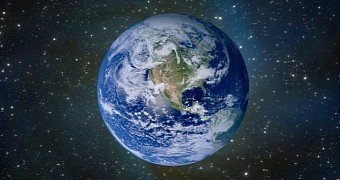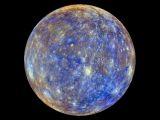Eons ago, when it was still in its infancy, our planet feasted on a celestial body similar to the planet Mercury, a team of researchers with the University of Oxford in the UK argue in a study published earlier this week in the journal Nature.
What's more, the scientists say that it was this Mercury-like object that seeded Earth with the elements it needed to generate the magnetic field that made it possible for life to emerge on our planet by protecting it against radiation from space.
Evidence of the feast
Writing in the journal Nature, University of Oxford geochemists Bernard Wood and Anke Wohlers explain that the reason Earth has a magnetic field strong enough to keep it safe from cosmic radiation is that its iron core also packs radioactive elements like potassium, thorium and uranium.
What's interesting is that, if left to their own devices, these radioactive elements wouldn't be caught dead hanging around with iron. Instead, they would cozy up to oxygen, form oxides and then work their way towards the planet's surface.
To explain the presence of radioactive elements at our planet's core, the University of Oxford scientists propose an ancient collision with a celestial body similar to Mercury in terms of chemical makeup, i.e. highly rich in sulphur but containing very little oxygen.
Thus, Bernard Wood and Anke Wohlers say that having Earth collide with such an object and swallow it whole would have seeded the planet's core with just enough oxygen-free sulfur compounds to trick radioactive elements into staying put.
This proposed collision would also explain the distribution of rare earth elements in our planet's crust and mantle. “A Mercury-like body added to Earth during accretion would solve two important problems,” explained researcher Bernard Wood, as cited by Space.
It might even solve three
It is widely accepted that Earth's one and only natural satellite, the Moon, formed in the aftermath of a dramatic and highly powerful collision with another celestial body. Most astronomers describe this celestial body as being similar to Mars.
The University of Oxford team suspect that this theory might be wrong and that the Moon was, in fact, formed by their proposed impact with a Mercury-like. “It's kind of exciting to think that this reduced body could actually be the thing which caused the moon,” said Bernard Wood in an interview.

 14 DAY TRIAL //
14 DAY TRIAL // 
